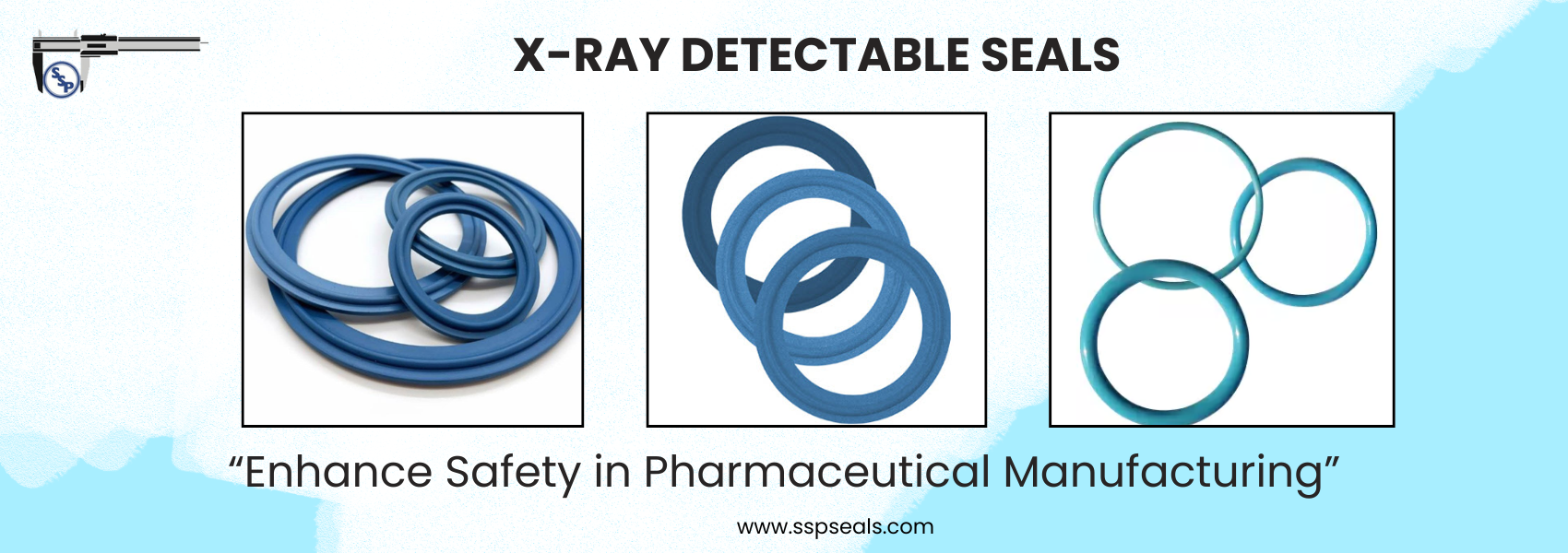 sales:
gm@sspseals.com
Toll Free: +1-888-238-SEAL Request A Quote
sales:
gm@sspseals.com
Toll Free: +1-888-238-SEAL Request A Quote
In today’s highly regulated pharmaceutical manufacturing environment, compliance with stringent safety standards such as Good Manufacturing Practice (GMP) guidelines is paramount. The use of X-ray detectable seals for process equipment is one of the ways to ensure safety as well as GMP compliance. These specialized, FDA-approved seals are engineered with X-ray visible materials so that if a gasket or O-ring fragment breaks off during production, it can be quickly identified and removed by an X-ray inspection system. This post discusses how X-ray detectable seals enhance safety in pharmaceutical manufacturing.

X-ray detectable seals are sealing components such as O-rings, gaskets, and diaphragms engineered with radiopaque (X-ray visible) materials that enable them to be detected by X-ray inspection systems. These seals are typically manufactured from elastomers infused with additives such as barium sulfate or other X-ray-sensitive compounds, making them visible under standard inspection protocols used in pharmaceutical and food-grade processing environments.
X-ray detectable seals offer several significant advantages in the pharmaceutical sector, wherein contamination control, safety, and regulatory compliance are crucial. Here are some key benefits:
X-ray detectable seals are typically made from elastomers, such as silicone or rubber, that are infused with radiopaque materials such as barium sulfate or calcium carbonate, which make them visible under X-ray imaging.
When a product passes through an X-ray inspection system, the radiopaque seals block more X-rays than the surrounding materials. This creates a contrast that allows the system to detect any seal fragments that may have detached during production. This feature ensures that even small fragments are identified before they can contaminate the product.
X-ray inspection systems capture real-time images of the product, automatically detecting any foreign particles or seal debris. If a fragment is identified, it can be removed from the production line immediately, minimizing contamination risks and ensuring product safety.
X-ray detectable seals find applications in several areas of pharmaceutical production. Here are some application areas.
By integrating these seals into manufacturing and packaging processes, pharmaceutical companies can reduce the risk of contamination, prevent costly recalls, and maintain high standards of quality and safety. If you are looking to enhance your pharmaceutical manufacturing process with reliable, FDA-approved X-ray detectable seals, SSP Seals offers a range of metal and X-ray detectable sealing solutions tailored to meet the highest industry standards. Visit SSP Seals to explore our products and find the perfect sealing solutions today.
Jul 22, 2025
Sustainability in Rubber Manufacturing: Is Nitrile Rubber Eco-Friendly?May 09, 2025
Innovative Sealing Solutions for High-Pressure Environments in Oil and Gas ApplicationsMar 28, 2025
PTFE vs. Rubber Seals: Key Differences and BenefitsFeb 26, 2025
How Seals and Gaskets Safeguard Food and Beverage Products?Feb 05, 2025